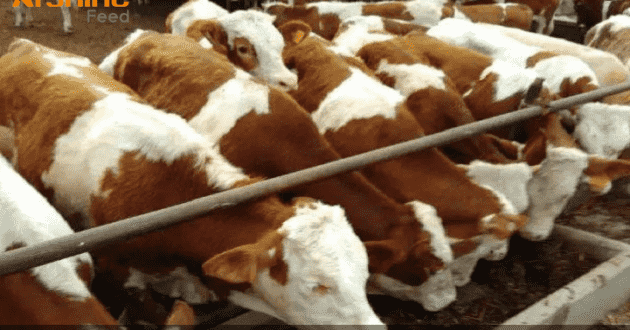Palomino Horses - Facts To Know
The Palomino horses are one of the favorite breeds among the royalty, thanks to its golden glistening coats and mane.
They are revered highly by the horse-lovers for their brilliant colors and hues since ancient times. They are all around the world and it should not come as a surprise to see them winning accolades at local horse shows, taking their place at the center stage among high-wigs, and even running wild among mustangs.
Palomino horses are hands down, one of the most beautiful breeds in the world. If they take your fancy, keep on reading the article to know more about them.
It’s A Color Thing
The primary thing you need to know about these horses is that Palomino refers to the color and not to the specific breed itself. They are the most easily recognized horses, but it is identified by the color of the coat and not its breed.
Any horse breed can produce a Palomino. There are two standards that every horse needs to pass in order to qualify to become a Palomino:
1. Gold-colored Coat
2. White Mane & Tail
In the end, everything that is related to its appearance comes down to genetic traits and not the breed itself. Keep in mind the color of the coat, mane, and tail.
Almost Half Of The Palomino Horses Are Quarter Horses
There is a long list of potential candidates that can produce Palomino horses. So, there is no question if being a horse breed that is incapable of producing Palomino horse in the meantime. Out of this crowd, Quarter Horses are at the advantage of others. According to an estimate, around 50% of all Palomino Horses are Quarter Horses.
American Saddle Horses, Thoroughbreds, Standardbreds, and Tennessee Walking Horses are among the breeds that commonly produce a Palomino.
It Takes Two Specific Genes To Produce A Palomino
Even at broad breed or pedigree level, it’ all about the genetic makeup of the horse that makes it fall into one or the other category.
To achieve the regal coloring of a Palomino, it takes a chestnut base coat coupled with a unit allele of a “cream” dilution gene. There are many other coat colors and shades that fall close to the category of Palomino, but it cannot be one without this gene. So, you need to confirm the base before purchasing one through pedigree and proper paperwork. Appearances can be deceptive.
Pro Tip: There is a breed called Cremello that resembles much with Palomino. If you are in the market to buy one, make sure to consult professionals before buying a horse.
There Are Look-Alikes
A horse cannot be an authentic Palomino in the absence of this cream gene. It is hard to distinguish a true Palomino from a look-alike because there are a number of horses that produce chestnut-colored coats, whitetail, and mane. Some are so close to the original Palomino that it can deceive a professional.
A good example of this phenomenon is the Haflinger horse. This breed does not carry this special gene in their DNA. But taking a look at this horse, it’s hard to think otherwise because of the golden blonde color and white mane and tail. However, they are genetically Chestnut Horses which are confused for Palominos.
Palominos Come In Different Shades
There is an established premise that Palominos are golden horses, but there is some room for variety, which only adds to the wild popularity of the breed. Essentially, when it comes to the exact coloring, their shades can range from pale gold to creamy, brassy, and deep gold.
On their mane and tail, a Palomino horse must have mostly white hair, but some dark locks here and there are just fine.
They Can Change Colors
Based on some factors, Palominos can change color drastically. The first factor in this effect is the diet of the horse because it can change how light or dark a horse’s coat color is. A higher protein or grain diet can even lead to dappling, or in mild cases, a darker coat. There is a chance that it changes the color of your horse altogether.
They also change color with the change of season which makes their spring and fall coats so different you would not believe it is the same horse.
Palominos For Royalty Only
Aside from her exuberant life and habits, it is a recorded fact that Queen Isabella of Spain was a true fan of Palomino horses. She kept more than 100 of these golden-haired horses in her residence and had a company of servants for their look after. Not stopping there, she abstained commoners from owning and riding such noble horses and it was reserved only for royalty, and a handful of special noblemen were allowed to keep them in their stables.
The queen was also the agent to spread Palomino across the globe. She dispatched many Palominos to North America to spread her influence which added to the richness of the native gene pool.
So, just like any other premium thing or asset in the market, monarchs and influential individuals tried to contain the production and rearing of palominos to keep it inside some specialized circles.
Influence Of Palominos On Native American Culture
There was a sudden rise in the population of local Palominos after Queen Isabella sent her prized mares to the New World Many of the sent horses were Palominos but it was the dramatic rise in local horse population that affects Native American culture.
The natives started to trap and tame more horses by using already-available horses. This allowed them to move swiftly, hunt effectively, and influenced tribes during the times of war, especially against aliens nations like Europeans.
Palominos Were Used In Crusades
At the times of Crusades, Palomino horses were considered to be an ideal mount. They looked impressive charging into the battle, strong to handle the load, and were easily trained to perform well on the battlefield.
There is no clear history as to when and where Palomino horses emerged. What we do know is that these golden horses were revered for millenniums and thought to be a symbol of status and riches.
Read more about Horses



